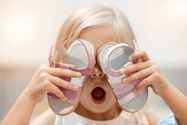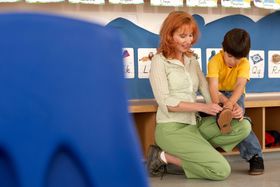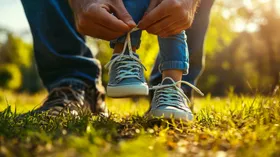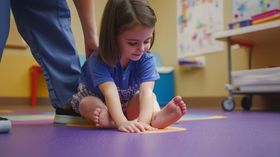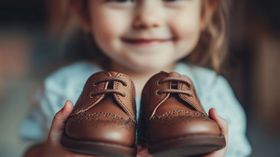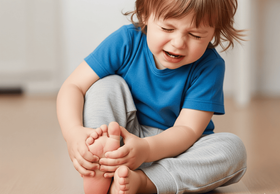Why Does My Baby Walk With Feet Turned Out?
Unraveling the mystery: Understanding your baby's unique walking pattern
Published December 10, 2024
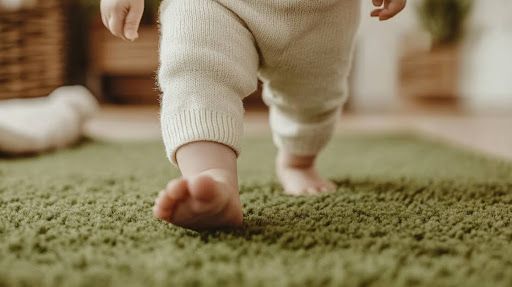
As a parent, watching your baby's first steps is an exciting milestone! But what happens when you notice your little one walking with their feet turned outward? Don't worry—this phenomenon, known as out-toeing, is quite common and often a normal part of childhood development.
Understanding the reasons behind this walking pattern can help ease parental anxiety and provide insights into your child's growth.
» Invest in supportive footwear to address your kid's out-toeing
Understanding Out-Toeing
Out-toeing is more than just a quirky walking style. A complex interplay of biological, developmental, and environmental factors shapes a child's early movement. At its core, out-toeing occurs when a child's feet deviate from a straight-forward position, instead pointing outward during walking or standing.
Out-toeing begins long before a baby takes their first steps. It starts in the mother's womb. A baby's positioning during pregnancy can significantly influence their early leg alignment. The cramped uterine environment often forces babies into positions that can impact how they eventually walk.
» Understand more about out-toeing
What Causes Out-Toeing?
Several key developmental processes contribute to this walking pattern:
- Tibial Torsion: This is a natural process where the shinbone slightly twists outward as a child grows. Imagine the leg bones as a spiral, gradually rotating and finding optimal alignment during early childhood.
- Hip Rotation: The external rotation of hips can cause feet to turn outward. This is often a result of the body's natural growth and muscle development processes.
- Muscle Development: Young children are essentially building their muscular infrastructure from scratch. Weakness or imbalance in hip and leg muscles can lead to compensatory walking patterns.
» Find out how to measure your child's feet for shoes
Potential Impacts of Out-Toeing
Most cases of out-toeing resolve naturally, but some potential long-term considerations include:
- Gait Mechanics: The outward foot position can slightly disrupt walking patterns. Children might experience minor coordination challenges and tire more quickly during physical activities.
- Balance Challenges: The altered foot position can make maintaining balance more difficult, potentially increasing the risk of falls during early walking stages.
- Joint Stress: Over time, persistent out-toeing can place additional strain on ankles, knees, and hips.
- Mobility Limitations: If left unaddressed, severe out-toeing might interfere with participation in sports or physical activities.
» Want to support your baby's development? Explore our supportive footwear collection
Medical Conditions to Be Aware Of
While typically harmless, out-toeing can sometimes indicate underlying conditions:
- Hip Dysplasia: A condition where the hip joint doesn't form correctly, potentially causing abnormal walking patterns.
- Neuromuscular Disorders: Conditions like cerebral palsy can affect muscle control and walking mechanics.
- Genetic Predispositions: Some inherited conditions can impact joint stability and muscle tone.
Consult a paediatrician if out-toeing continues beyond age 4, causes pain, or shows significant walking difficulties. Early identification and intervention can help address underlying issues and promote optimal development.
» Explore kids' shoes for orthotics and support their foot health
Supportive Strategies for Parents
Helping your child develop strong, confident walking skills is a journey filled with love, patience, and strategic support. Here's how you can actively support your child's walking development and address out-toeing.
- Physical Activity Encouragement: Create obstacle courses, climbing structures, and interactive play areas to encourage exploration and develop motor skills.
- Barefoot Time: Prioritize safe surfaces and sensory activities to promote muscle development and sensory awareness.
- Appropriate Footwear: Choose flexible, lightweight shoes that support natural foot movement. Avoid overly rigid or ill-fitting footwear.
- Massage: Use gentle leg and foot massages to enhance circulation and support muscle development.
» Learn about the benefits of being barefoot for kids
Empower Your Child's Journey
Supporting your child's walking development is about creating a nurturing, encouraging environment. Every child develops differently, and out-toeing is often a temporary phase. Stay patient, observant, and supportive.
First Walkers' orthopaedic collection offers a proactive solution for parents seeking to support their child's walking development. Crafted with soft, flexible materials and designed to promote natural foot movement, these shoes provide guidance without restricting natural development.
First Walkers represent more than footwear—they're a tool for supporting your child's physical exploration and growth.
Disclaimer: First Walkers' information is intended for educational and informational purposes related to toddler footwear and feet. We encourage you to consider individual circumstances and consult qualified orthopaedists about specific conditions.
